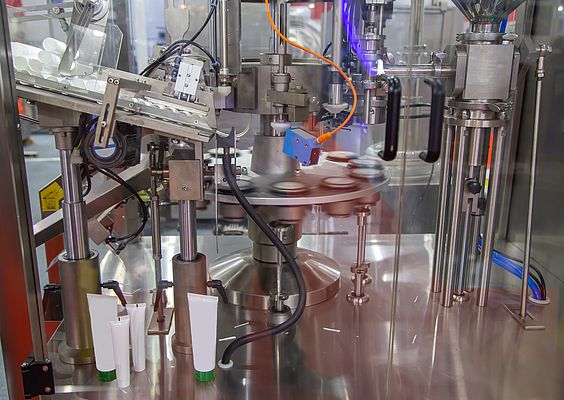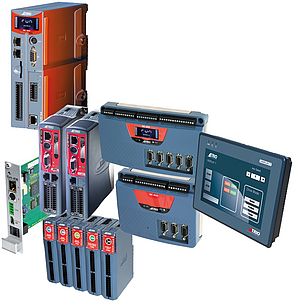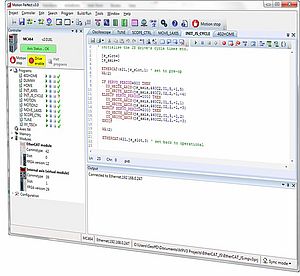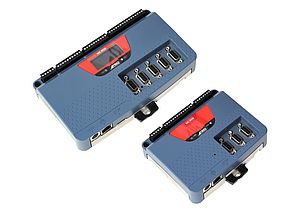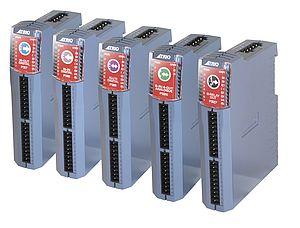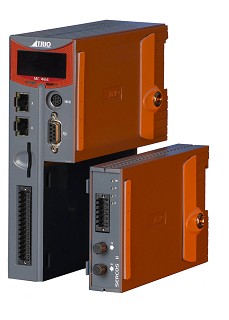Trio Motion Technology. A liquid filling machine builder has increased machine speed by 8% and boosted machine efficiency to 91% after upgrading from a PLC system to a motion control solution. Liquid filling sachet and tube packaging solutions provider, Unette, has integrated Trio Motion Technology’s complete machine control package including controller, servo drives and motors, to improve its overall productivity. The upgrade has also increased reliability that has reduced downtime, as well enabling a faster machine set-up.
Founded in 1962, Unette builds and operates bespoke machinery for a form, fill and seal process unique within the packaging industry. Covering all types of liquid filling including toiletries, nutraceuticals and medicines, Unette’s customers include global household brands who choose Unette for the speed and quality of service and professionalism. Based in Cheshire, UK with a team in excess of 50, the plant has capacity for 1.85 million dosing cycles per week. The group also has a facility in New Jersey, USA, with a further 250 staff.
The challenge
Historically using cam-operated machines, Unette began to combine motion control with servo and stepper motors to improve speed and accuracy. With its two-axis filling and printing machine, tubes are formed individually before cyclically filled with product. They are then die cut shaped, multi coded and any appendages attached.
The cam indexer moves the rotating carousel that holds the tubes until the plate is in the correct position. At that stage, one servo axis controls the motion of the filling heads that dispense the media, the other controls movement of the film for applying brand and product information on the tubes. These two actions have to be synchronized to the main cam and must be coordinated at precisely the right time to ensure accuracy of filling and over printing. This process also has to be implemented at high speed in order to meet demanding productivity rates.
Previously, Unette used a PLC with a servo package from multiple vendors to achieve the motion control. However, to improve productivity, the accuracy of fill and print registration needed to be increased, as well as the speed of control. Accumulated errors also decreased reliability and using different vendors for the various components within the system resulted in a lack of compatibility.
“Allowing the PLC to coordinate the motion created problems in accuracy and reliability. We wanted a stable approach with more productivity,” says Martyn Hudson, Founder and Chief Engineer, Unette.
“Not only was the level of control not achievable with a PLC, we couldn’t get the PLC and the servo drives to talk to each other reliably at speed and neither vendor could resolve the issues,” adds Martyn. “We wanted a simpler approach. Using a motion controller has not only proved to be more effective, it has also saved us money and made changes easier by less skilled staff.”
Increased productivity
Trio installed a complete machine solution, including its highly compact Flex-6 Nano motion coordinator with dual core processor, combined with two Trio DX4 servo drives and Trio MX series servo motors. The Flex-6 Nano controls the entire process, including packaging and filling, from infeed to outfeed.
Efficiency has increased through Trio’s fully integrated motion control solution that has reduced downtime, improving productivity as a result. Not only has machine speed increased by 8%, daily efficiency of the machine has risen to 91% and Unette is confident that this figure can be further improved.
Trio’s coordinator has not only enhanced the machine’s motion control, but it can also command the required logic functions.
“The Trio motion coordinator now manages the areas of process control formerly taken care of by the PLC,” says Martyn. “This means that the motion coordinator can also control the timers and counters, for example managing shift registers for the in-line process control to make sure we don’t have any faulty packs coming out of the finished delivery chute, which would otherwise involve more downtime or reduce batch quality.”
Fast, simple set-up
The machine’s original motion control commands have been replicated by Trio’s motion coordinator, combined with replication of all PLC controls which were added via IEC 61131-3 programming. Set up of the controller and drives takes place within Trio’s Motion Perfect software, and with no special programming required, the application runs on the Trio controller’s standard functions. For Unette, it was an advantage that the Trio system is managed by a single software programme.
“The software achieves what we were previously attempting with several individual platforms. As the software interconnects the controller and servo, it’s more user-friendly and will hopefully save us a lot of time and cost in installation and commissioning future machines.”
Trio’s interconnected machine solution reduces the requirement for hard wiring as no cross-addressing is necessary between equipment from different vendors. In terms of programming, the new solution provides a considerable saving for Unette, which typically reprogrammes its machines every few days depending on the requirement of its customers.
“In future, there’ll be less and less need to develop new code. This will save us a lot of time and enable faster development for each new application,” says Martyn.
Easy integration
In addition to rapid commissioning, physically the Trio hardware integrates easily into Unette’s existing machine. The pocket-sized Flex-6 Nano is just 147 mm in height and is the width of an I/O slice, while the servo drives are among the most compact for their rating.
Trio’s products are also backwards compatible with support ongoing for 20 years-plus, and this remains the case for many of Trio’s early controllers that are still in service. This is a crucial area for Unette.
“We over engineer machines to keep them flexible and for use in the field for a long time, so we need a guarantee of support and compatibility for legacy products, including backwards compatibility,” says Martyn. “For example, we’ve just taken a machine offline after being installed in 1966, so we need long-term support.”
Future development
With over 20 machines in total, Unette now has three machines operating with a full Trio solution and the company will begin to migrate its other machines to Trio. Unette will also implement additional controls such as pick-and-place for inserts into flexible packaging. While Unette is confident of long-term efficiency gains in man-hours and reliability, a saving has already been made at outset with the company reporting that the package is around 8% more economical than other vendors.


